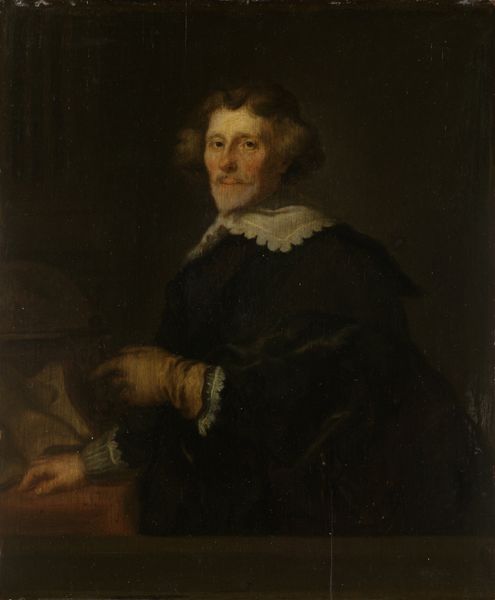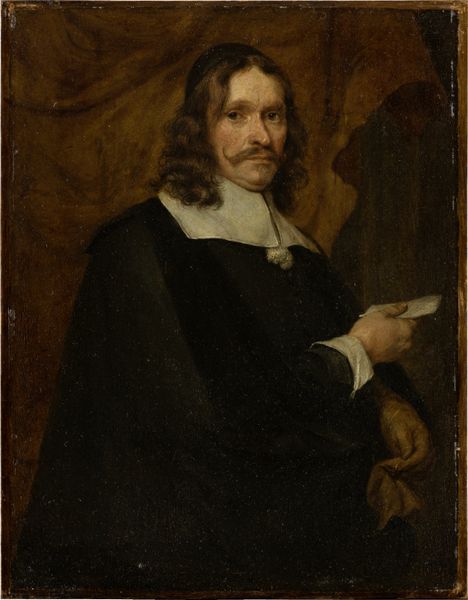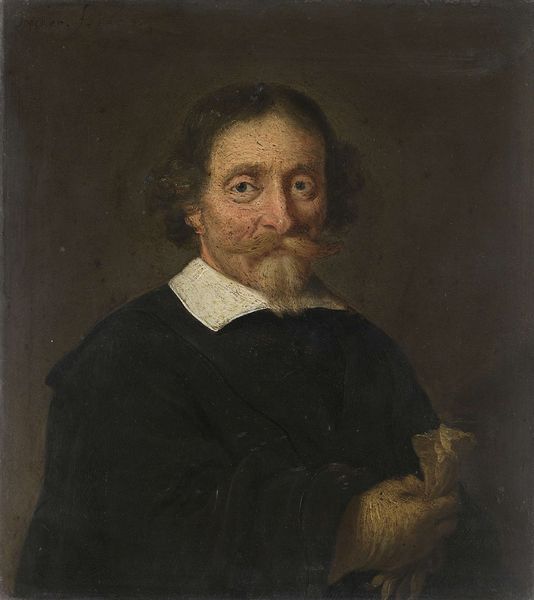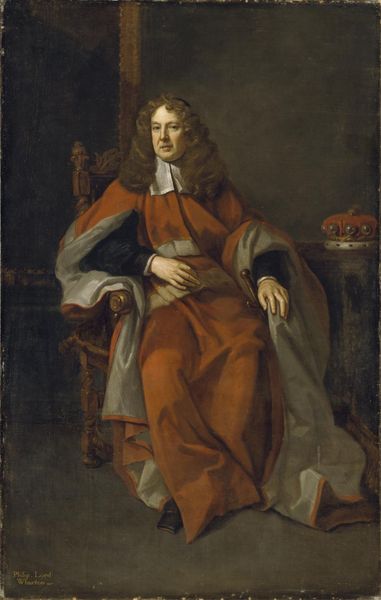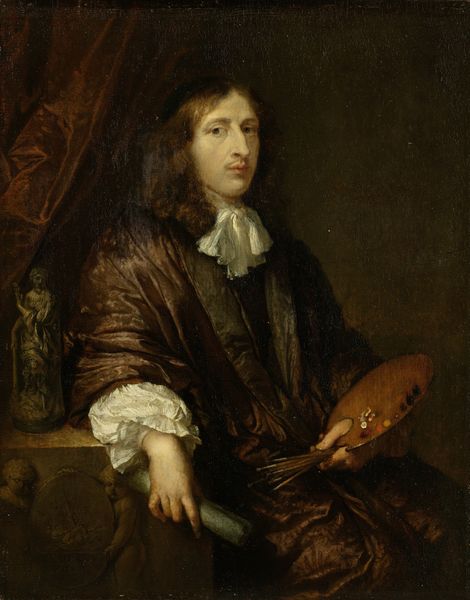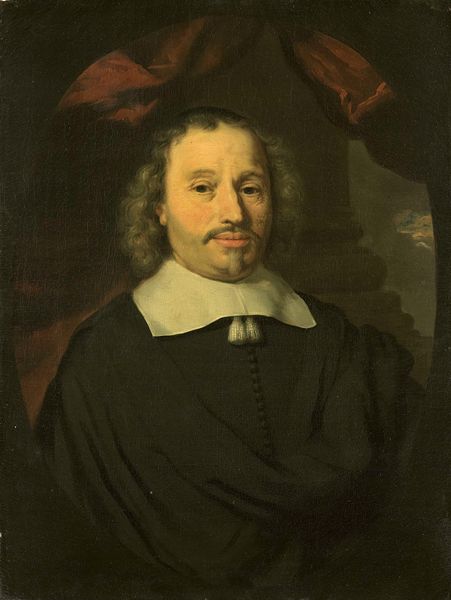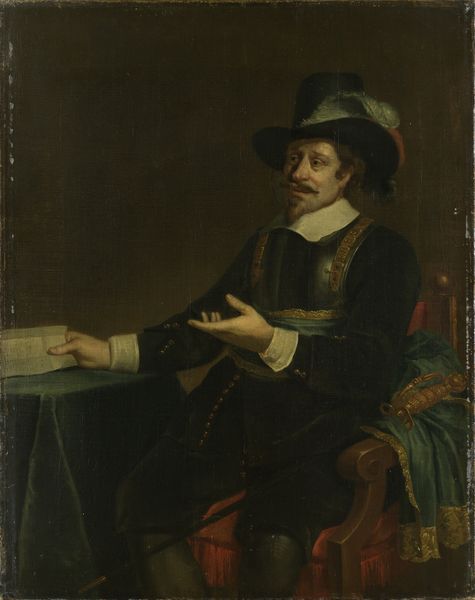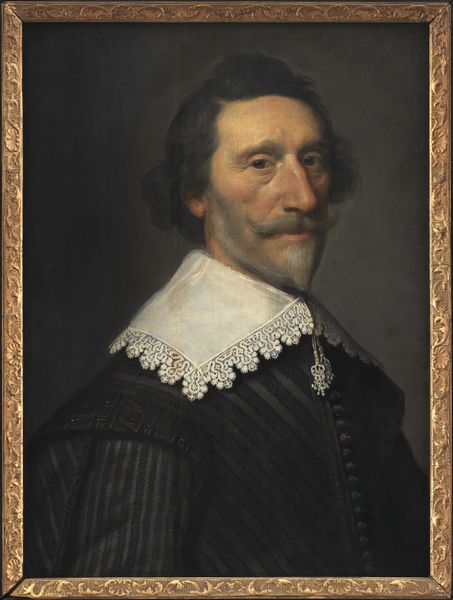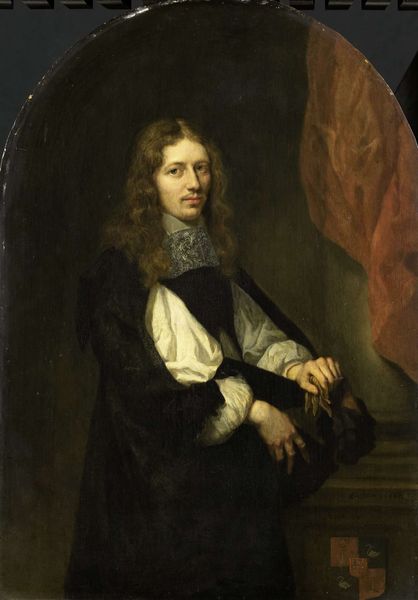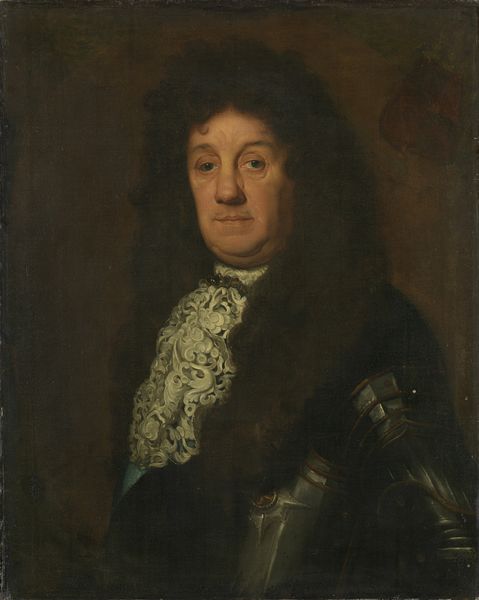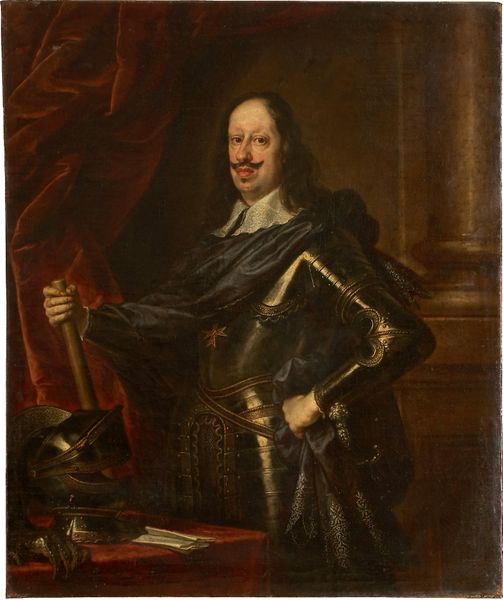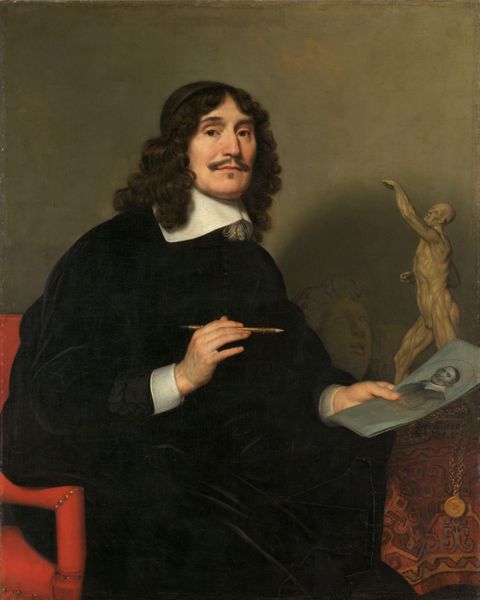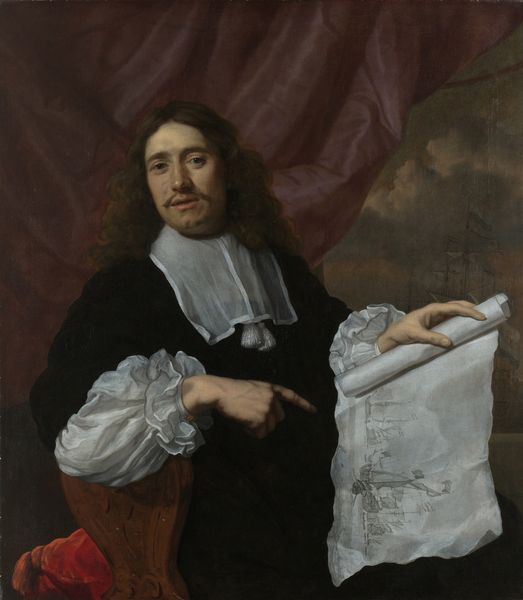
Portrait of Pieter Corneliszoon Hooft, Bailiff of Muiden, Historian and Poet 1630 - 1700
0:00
0:00
painting, oil-paint
#
portrait
#
baroque
#
painting
#
oil-paint
#
genre-painting
#
history-painting
#
academic-art
#
realism
Dimensions: height 109 cm, width 83 cm
Copyright: Rijks Museum: Open Domain
Curator: Here we have a portrait of Pieter Corneliszoon Hooft, Bailiff of Muiden, historian, and poet, rendered sometime between 1630 and 1700 by Joachim von Sandrart. What strikes you initially about this oil painting? Editor: Well, the chiaroscuro is immediately apparent, isn't it? The subject emerges from a very dark background, bathed in a gentle, almost theatrical light. There’s a certain somber elegance about the composition, a real sense of depth. Curator: The use of light certainly emphasizes Hooft's status, aligning with the Baroque period's artistic values of portraying nobility and grandeur. As a bailiff, historian, and poet, Hooft held a significant position in Dutch society; portraiture became crucial for the Dutch elite. Editor: I am drawn to the intricate lace collar and the delicate rendering of his hands, particularly how the light catches the folds of his gloves. Von Sandrart certainly knew how to capture texture and form. Is the globe included as a direct symbol of Hooft's worldview or something more conventional for the time? Curator: Good eye. Globes often served symbolic purposes in portraits, especially those of intellectuals. Here, it can represent Hooft’s engagement with knowledge, history, and perhaps even his political role. Globes signified a worldly perspective, crucial for someone involved in governance and historical writing, situating Hooft within a lineage of learned individuals. Editor: The composition as a whole has a real gravity to it. The starkness of his clothing against the background…the artist is deliberately focusing our attention, framing Hooft as an individual of intellectual substance, a figure that demands our attention and respect through artistic methods of manipulating our vision. Curator: Absolutely. This image fits squarely into a broader project to celebrate civic virtue. The Rijksmuseum owning it now highlights our ongoing cultural engagement with this era of history. Editor: I find it interesting how portraiture then served not only to immortalize individuals, but to shape perceptions, creating these almost mythical constructions. Curator: And how that still holds true, even today, doesn't it? I think delving into these portraits helps reveal to a modern audience that, although created long ago, their power to shape public images has surprising contemporary significance. Editor: A solid observation; it reveals how much our understanding relies not just on the subject but on artistic intentions, which always affects cultural context and shapes how the public remembers history.
Comments
No comments
Be the first to comment and join the conversation on the ultimate creative platform.
